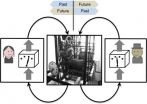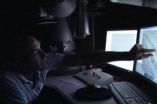(Press-News.org) An online study of eligible voters around the country revealed that the preference for whites over blacks is the strongest in the least politically-partisan voters. Among these voters, race biases against Barack Obama could produce as much as a 20 percent gap in the popular vote in a contest that would otherwise be equal.
"Although they may not determine the election outcome, race biases are having a strong anti-Obama effect among the least politically partisan voters," said Anthony Greenwald, a University of Washington psychology professor who conducted the survey. "If present pre-election polling is accurate, the effect of racial attitudes will have their effect on Barack Obama's winning margin but not on the election outcome."
Most recent polls show Obama in the lead. This suggests that although race biases are a "hill he has to climb, the polls indicate that he's actually climbing it," Greenwald said. "People who have race biases against Obama may still believe he's preferable to Mitt Romney for other reasons, and so race attitudes do not appear to be potent enough to overcome the other sources of favorability for Obama."
About 8,600 eligible voters participated in Greenwald's latest online survey, collected from July through September. Eighty percent of the respondents were white, approximating the electorate. However, because the sample had a substantial majority of liberals it should not be considered representative of the American electorate.
The study included the Implicit Association Test to measure implicit racial attitudes, which are preferences that people may not realize they have. In the past 10 years, various adaptations of the tool have been used to reveal unconscious attitudes about race, gender, sexuality, ethnicities and other topics.
In addition to implicit and self-reported measures on race attitudes and demographic characteristics, Greenwald included various measures of political beliefs, including stances on policy issues such as taxes on the wealthy, immigration and health care.
In his sample of voters, Greenwald found that 25 percent of the most ideologically polarized voters appeared to be already settled on their preferred candidate. In this group, race attitudes appeared to influence votes for only about 2.4 percent of participants.
"These people strongly favor one candidate over another, and race attitudes have only a relatively small effect on their vote," Greenwald said.
But then he took a closer look at the race attitudes for the 25 percent who were least polarized — having no strong affiliations with either political party. The research showed that race attitudes were influencing the choice of candidate for nearly 10 percent of these voters. If 10 percent of voters switched their vote for or against a candidate, that would cause an increase of 20 percent in the gap between candidates.
"Our method was like putting a magnifying glass on the distribution of voters, allowing us a close-up look at various segments," Greenwald said. Those at the far ends strongly favoring Obama or Romney were relatively little affected by racial attitudes. But those closer to the middle of the distribution showed a considerably greater influence of racial biases.
Greenwald points out that any Democratic presidential candidate, including white ones, faces a race attitude handicap. This is because voters with white racial preferences are typically opposed to social and economic policies favored by national Democratic nominees.
Greenwald's findings are consistent with data he released in May, showing that voters' race attitudes leading up to the Republican primary already had a more pronounced role in predicting their vote than in the 2008 presidential contest.
He will continue to collect survey data as part of the year-long Decision 2012 IAT project. Data collected through October will be used to determine whether race attitudes still have as large of an effect on undecided voters.
###
Other collaborators on the project are Brian Nosek and Sriram Natarajan, at the University of Virginia, and Teri Kirby, Kaiyuan Xu and Sianna Ziegler, all at UW.
For more information, contact Greenwald at 206-543-7227 or agg@uw.edu. Anyone can participate in the online study, which will be available until a few days beyond Election Day, Nov. 6: https://implicit.harvard.edu/implicit/demo/featuredtask.html.
Among voters lacking strong party preferences, Obama faces 20% handicap due to race bias
2012-10-02
ELSE PRESS RELEASES FROM THIS DATE:
New research model to aid search for degenerative disease cures
2012-10-02
Irvine, Calif., Oct. 2, 2012 — Efforts to treat disorders like Lou Gehrig's disease, Paget's disease, inclusion body myopathy and dementia will receive a considerable boost from a new research model created by UC Irvine scientists.
The team, led by pediatrician Dr. Virginia Kimonis, has developed a genetically modified mouse that exhibits many of the clinical features of human diseases largely triggered by mutations in the valosin-containing protein.
The mouse model will let researchers study how these now-incurable, degenerative disorders progress in vivo and will ...
Quantum causal relations: A causes B causes A
2012-10-02
This press release is available in German.
One of the most deeply rooted concepts in science and in our everyday life is causality; the idea that events in the present are caused by events in the past and, in turn, act as causes for what happens in the future. If an event A is a cause of an effect B, then B cannot be a cause of A. Now theoretical physicists from the University of Vienna and the Université Libre de Bruxelles have shown that in quantum mechanics it is possible to conceive situations in which a single event can be both, a cause and an effect of another one. ...
Ames Laboratory finds ordered atoms in glass materials
2012-10-02
Scientists at the U.S. Department of Energy's Ames Laboratory have discovered the underlying order in metallic glasses, which may hold the key to the ability to create new high-tech alloys with specific properties.
Glass materials may have a far less randomly arranged structure than formerly thought.
Over the years, the ideas of how metallic glasses form have been evolving, from just a random packing, to very small ordered clusters, to realizing that longer range chemical and topological order exists.
But by studying the structure of a metallic glass alloy formed ...
Use of EHR associated with improvements in outcomes for patients with diabetes
2012-10-02
OAKLAND, Calif., October 1, 2012 — Use of electronic health records was associated with improved drug-treatment intensification, monitoring, and risk-factor control among patients with diabetes, according to a new Kaiser Permanente study.
In the study, which appears in the current issue of Annals of Internal Medicine, researchers also noted greater improvements among patients with poorer control of their diabetes and lipids. The findings provide an important contribution to the evidence base by demonstrating that, for the first time in a large population, EHRs help clinicians ...
Study examines safety of quadrivalent HPV vaccine given to females
2012-10-02
CHICAGO – A study of girls and young women in California suggests that the quadrivalent human papillomavirus vaccine (HPV4) appeared to be associated with syncope (fainting) on the day of vaccination and skin infections in the two weeks after vaccination, according to a report published Online First by Archives of Pediatrics & Adolescent Medicine, a JAMA Network publication.
Human papillomavirus (HPV) is a family of small DNA viruses and infections with this viral family are the most commonly detected sexually transmitted infections in women. While most of these infections ...
Psychiatric disorders persist after youths leave detention
2012-10-02
CHICAGO --- It was a study everyone thought couldn't be done -- tracking, locating and interviewing nearly 2,000 youths up to five years after they were released from juvenile detention in Chicago to assess their mental health.
But a team of intrepid Northwestern Medicine researchers found the young men and women and traveled anywhere necessary to interview them. Many were interviewed after they returned home. Others, however, were interviewed in less conventional locations -- a dancer on a break from her job in a nightclub, a woman in her boyfriend's garbage truck or ...
Study suggests high use of medicare skilled nursing benefit at end of life
2012-10-02
CHICAGO – Almost one-third of older adults received care in a skilled nursing facility in the last six months of life under the Medicare posthospitalization benefit, according to a report published Online First by Archives of Internal Medicine, a JAMA Network publication.
While most Medicare beneficiaries enroll in skilled nursing facility (SNF) care for rehabilitation or life-prolonging care, experience suggests that some dying patients are discharged to a SNF for end-of-life care. Switching patients from Medicare coverage under the SNF benefit to the hospice benefit ...
Psychiatric disorders may persist in some young people after detention
2012-10-02
CHICAGO – A study of juveniles detained in Chicago suggests that more than 45 percent of males and nearly 30 percent of females had one or more psychiatric disorders with associated impairment five years after detention, according to a report published in the October issue of Archives of General Psychiatry, a JAMA Network publication.
Psychiatric disorders are prevalent among incarcerated juveniles. The disorders are likely to persist as the juveniles grow to be young adults because risk factors for psychiatric disorders are common among delinquent youth, including maltreatment, ...
Auto experts recognize cars like most people recognize faces
2012-10-02
When people – and monkeys – look at faces, a special part of their brain that is about the size of a blueberry "lights up." Now, the most detailed brain-mapping study of the area yet conducted has confirmed that it isn't limited to processing faces, as some experts have maintained, but instead serves as a general center of expertise for visual recognition.
Neuroscientists previously established that this region, which is called the fusiform face area (FFA) and is located in the temporal lobe, is responsible for a particularly effective form of visual recognition. But ...
Study affirms safety of HPV4 vaccine for adolescents and young women in routine clinical care
2012-10-02
OAKLAND, Calif. — A study of almost 200,000 young females who received the quadrivalent human papilloma virus (HPV4) vaccine found that immunization was associated only with same-day syncope (fainting) and skin infections in the two weeks after vaccination. These findings support the general safety of routine vaccination with HPV4 in a clinical care setting to prevent cervical and other genital and reproductive cancers.
The association between HPV4 and syncope was not unexpected, the researchers noted, because injections in general are known to have a correlation to fainting, ...

